There’s a growing interest in maximizing crop yields through deep water culture (DWC) systems. For enthusiasts looking to maintain a thriving garden throughout the year, understanding how to adapt their techniques to seasonal variations is important. As temperatures fluctuate and light levels change, she may find that adjusting nutrient solutions, water temperature, and lighting schedules can significantly enhance plant growth. This post will detail effective strategies that they can implement to ensure a productive DWC setup, no matter the season.
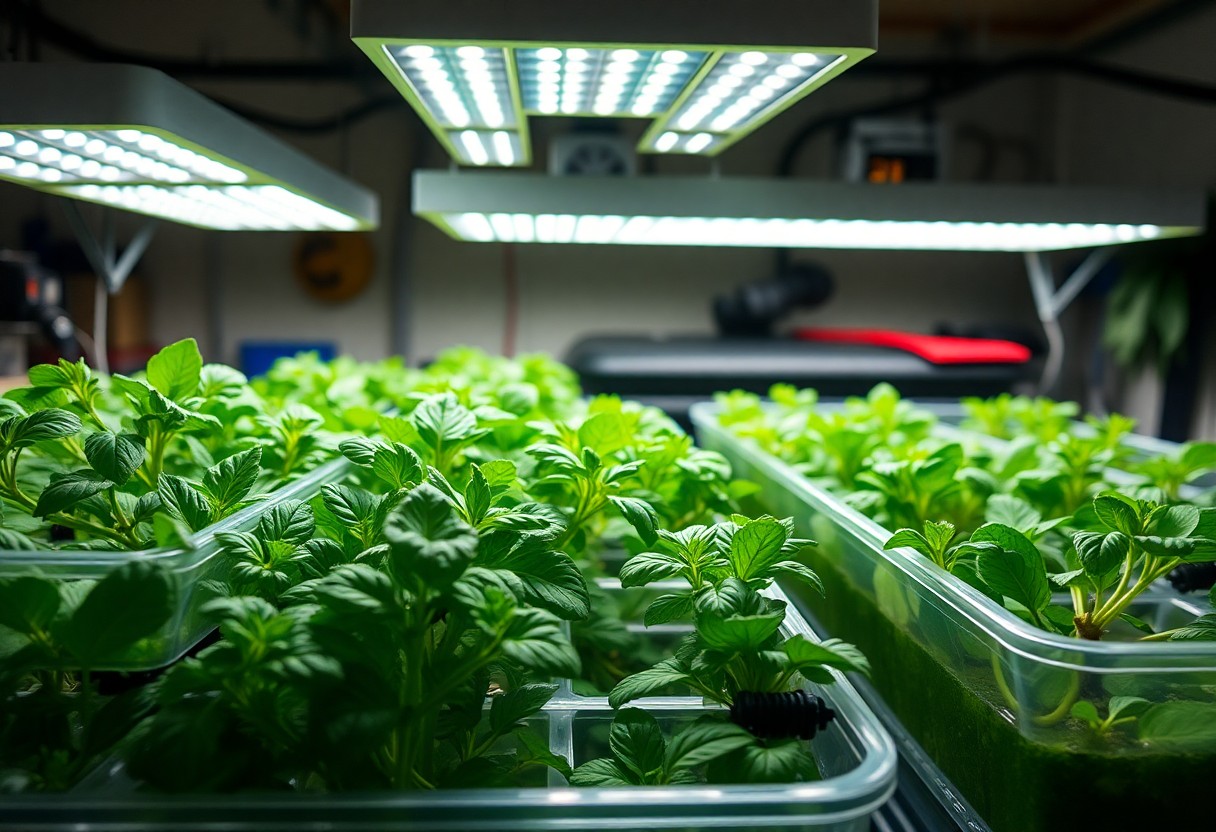
Key Takeaways:
- Adjust water temperature in Deep Water Culture (DWC) systems to match seasonal changes, promoting optimal root health and nutrient uptake.
- Employ supplemental lighting during shorter days in winter months to ensure plants receive adequate light for photosynthesis, maintaining growth rates.
- Monitor and manage humidity levels, particularly in warmer months, to prevent mold and pest issues while promoting a healthy growing environment.
- Incorporate seasonal nutrient adjustments to meet the varying growth demands of plants throughout the year, enhancing overall yield and health.
- Utilize climate control methods, such as heating or cooling systems, to maintain a stable environment in your growing area regardless of external weather fluctuations.
The Benefits of Year-Round DWC Farming
Maximizing Growth Cycles
Year-round Deep Water Culture (DWC) farming allows growers to optimize their cropping schedules, effectively maximizing growth cycles throughout the seasons. By manipulating environmental factors such as light exposure, nutrient delivery, and water temperature, he can maintain ideal growing conditions regardless of outside climate changes. For instance, the use of grow lights can extend photoperiods, allowing him to grow high-light-demand crops such as tomatoes and peppers even during shorter winter days. This strategy not only boosts productivity but also enhances the overall quality and yield of the harvest.
In warmer months, he may choose to introduce fast-growing varieties that can complete multiple growth cycles within a single season. By transitioning to plants with shorter maturation times, she increases her output significantly. Implementing a staggered planting schedule ensures that there are always crops at different growth stages, offering the opportunity to harvest regularly and maintain momentum in production.
Economic Incentives for Constant Production
The economic advantages of year-round DWC farming are substantial, particularly in today’s fast-paced market where consumers demand fresh produce all year long. Constant production allows growers to tap into consistent revenue streams, mitigating the financial volatility often associated with seasonal growing. By selling crops during off-peak seasons, he stands out in competitive markets, often commanding higher prices due to limited supply. Reports indicate that growers practicing year-round DWC can increase their revenue by as much as 30% compared to those limited to traditional seasonal farming.
Having a steady supply of fresh, locally grown produce also opens up opportunities for partnerships with restaurants, grocery stores, and farmer’s markets, which increasingly prioritize sourcing from local producers. He benefits from the burgeoning local food movement, where consumers are willing to pay a premium for freshness and sustainability. Furthermore, she can negotiate contracts or pre-sales agreements that assure income even before harvest, providing financial stability and predictability in cash flow.
By fostering these relationships, producers can not only secure repeat business but also expand their customer base, which ultimately solidifies their position in the market. Establishing a reputation for consistent quality and availability further enhances his competitive edge, making year-round DWC farming not just a smart environmental choice but a savvy business strategy as well.
Environmental Control: Creating the Ideal DWC Atmosphere
Temperature Management Techniques
To achieve optimal conditions within a Deep Water Culture (DWC) system, effective temperature management is necessary. Maintaining water temperatures between 18°C and 22°C (65°F to 72°F) fosters robust root health, which can ultimately lead to increased nutrient uptake and faster growth rates. Employing techniques such as water chillers, heating mats, or even ice bottles can help regulate the temperature of the nutrient solution. Heaters can be particularly useful during the colder winter months, while chillers are important in the summer to prevent overheating.
| Technique | Description |
|---|---|
| Water Chillers | Designed to cool down the nutrient solution, keeping it at optimal temperatures during hot weather. |
| Heating Mats | Placed under the reservoir to warm up the water during cold months and create a suitable environment. |
| Ice Bottles | Simple DIY method of placing frozen water bottles in the reservoir to temporarily reduce temperatures. |
Humidity Regulation Strategies
Humidity can significantly impact plant health, especially in a DWC system. Maintaining humidity levels between 40% and 70% is advisable for optimal growth. Excessive humidity can lead to diseases such as root rot, while low humidity may cause stress to plants, affecting their growth and yield. Shedding moisture-laden air through ventilation or utilizing dehumidifiers can be effective strategies in controlling humidity. Meanwhile, employing humidifiers can help raise humidity levels, particularly in arid regions or during dry seasons.
Adjusting humidity levels is not a one-size-fits-all approach; cultivators should consider their specific plants’ moisture preferences. For instance, tropical varieties often prefer higher humidity levels, while succulents thrive in drier conditions. Implementing strategies like misting or utilizing closed-loop systems can further enhance humidity control tailored to specific plant needs.
Light Spectrum Adaptation
Selecting the appropriate light spectrum is fundamental to optimizing plant growth in a DWC setup. Different growth stages require varying light spectrums—blue light (400-500 nm) is typically beneficial during the vegetative stage, promoting leaf development, while red light (600-700 nm) enhances flower and fruit production. To effectively cater to these varying needs, cultivators can use adjustable LED grow lights that allow for easy modification of the light spectrum depending on the growth phase.
Moreover, seasonal adaptations in light duration and intensity cannot be overlooked. For example, during the winter months, increasing the duration of light may help compensate for shorter days, ensuring plants receive adequate exposure for healthy growth. Utilizing light timers or smart gardening systems can automate this process, allowing growers to focus on other crucial aspects of their cultivation.
Nutrient Schedules that Sync with Seasonal Changes
Adjusting Nutrient Ratios for Different Growth Phases
Seasonal adjustments in nutrient schedules can significantly impact plant health and growth rates. During the vegetative phase, a higher nitrogen ratio is important for robust leaf and stem growth. In contrast, as plants transition into the flowering and fruiting phases, reducing nitrogen and increasing phosphorus and potassium becomes necessary. He may adopt a nutrient mix ratio of 3:1:2 (Nitrogen:Phosphorus:Potassium) during the veg phase, while shifting to a 1:3:4 ratio when flowering begins. This balance allows the plants to maximize energy utilization, ensuring stronger root systems and increased yield.
Monitoring growth stages closely provides insights into when to make these adjustments, and using nutrient solution titrators can help maintain these ratios consistently. It’s advisable to label each nutrient batch with the respective macro and micronutrients to streamline this process, enabling growers to transition smoothly through phases without delays. By staying attuned to these needs, they can prevent nutrient lockout and ensure plants receive the optimal nutrients required for each stage of growth.
Seasonal Nutrient Shortages and Solutions
Different seasons bring varying levels of nutrient availability, and growers often encounter shortages that can hinder growth in their DWC systems. During the winter months, for example, the availability of light diminishes, which can affect plants’ abilities to uptake nutrients efficiently. Additionally, cold temperatures can slow down plant metabolism, reducing their overall nutrient requirements, but incorrect nutrient stock can still lead them to inadequately meet their needs. She might find that typical nutrient schedules are not sufficient, leading to deficiencies such as nitrogen tomorrow in the colder months.
Addressing these seasonal nutrient shortages requires proactive measures, such as maintaining comprehensive monitoring and adjusting the nutrient strategy based on current environmental conditions. If nitrogen and iron shortages are detected, supplementing with soluble forms or chelated products can enhance nutrient availability. Moreover, utilizing organic inputs like compost or fish emulsion can deliver vital nutrients if synthetic options are less effective due to temperature variations. Ensuring the nutrient reservoir is heated to the appropriate levels also helps improve uptake during winter months, preventing common pitfalls associated with cold DWC setups.
The variability of environmental conditions throughout the year can create challenges that directly impact nutrient availability. As grower practices evolve, they can implement comprehensive log systems to document nutrient uptake changes during different seasons. This documentation can inform future strategies and adjustments to nutrient schedules, allowing them to build a database of practices that yield successful outcomes year-round. By staying proactive and adaptable, they can overcome seasonal nutrient shortages and sustain healthy, productive plants.
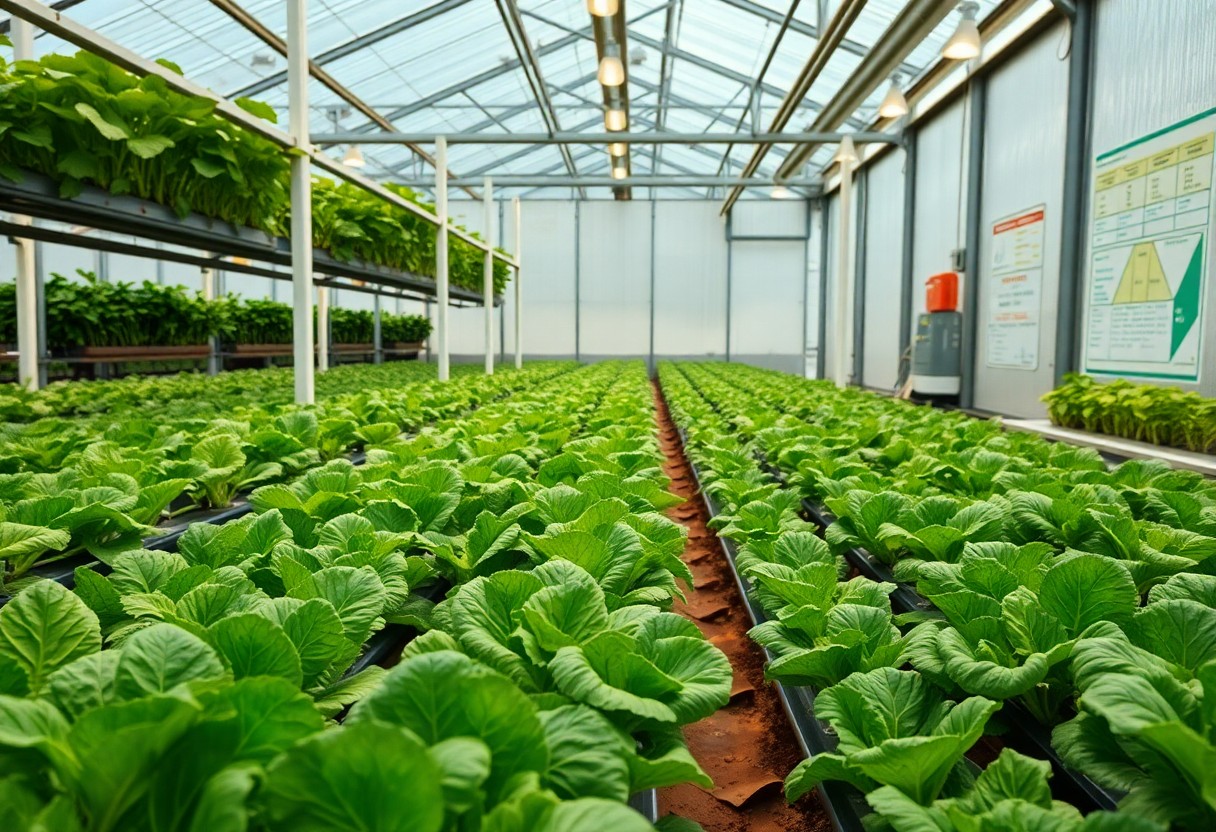
Pest and Disease Management: Adapting Year-Round Defenses
Seasonal Pest Trends and Predictive Strategies
Year-round DWC growers face a unique set of challenges when managing pests and diseases, as some infestations show distinct seasonal trends. For instance, aphids and spider mites tend to peak during warmer months, while fungal issues such as powdery mildew might arise more frequently in high humidity environments. Understanding these trends allows growers to implement predictive strategies by monitoring environmental conditions and plant health proactively. Utilizing tools like weather forecasts and historical pest occurrence data can help anticipate threats, enabling timely interventions before they escalate.
Shedding light on preventive measures, some growers adopt a rotational planting strategy that disrupts established pest life cycles. For example, alternating between crops that attract different pest species can reduce the overall pest population by leaving fewer suitable hosts available. Couple this with regular scouting practices—checking plant undersides, stems, and leaves—and growers can identify pest pressure before it compromises the integrity of their harvest.
Integrated Pest Management for DWC
Employing Integrated Pest Management (IPM) techniques enhances the resilience of DWC systems. This approach encompasses a variety of strategies: biological controls, cultural practices, physical barriers, and chemical treatments, ensuring both efficacy and sustainability. Biocontrol agents, like predatory insects such as ladybugs or parasitic wasps, have shown effective results in diminishing aphid populations without relying solely on chemical sprays. Similarly, crops can be spaced properly to improve air circulation, reducing humidity that fosters disease development. Regular cleaning and disinfection within the DWC system also play a significant role in curbing disease spread.
Building an effective IPM plan necessitates a thorough understanding of the ecosystem within the DWC setup. Monitoring plant health and pathogen presence meticulously empowers growers to rapidly respond to emerging issues. Keeping a log of pest populations and the effectiveness of applied control methods enhances the overall strategy. Moreover, educating the team about pest identification and management techniques can create a knowledgeable workforce prepared to tackle pest challenges as they arise, fostering a sustainable and productive growing environment.
Crop Selection: Choosing the Right Varieties for Every Season
Fast-Growing Varieties for Quick Turnaround
Selecting fast-growing crops enhances turnover rates, allowing growers to maximize yield and minimize downtime. For instance, lettuce varieties such as Butterhead or Romaine can mature in as little as 30 days from seed to harvest, making them ideal for DWC systems where conditions can be optimized for rapid growth. Additionally, herbs like basil and cilantro thrive in aquaponic systems and typically reach harvestable size in 20 to 30 days. Such fast-growing options create advantages not only economically but also in maintaining a continuous supply of fresh produce. Furthermore, incorporating crops like radishes, which can be ready for harvest in approximately three to four weeks, keeps the growing cycle dynamic and energizing. By carefully selecting a blend of fast-growing varieties, the grower can consistently introduce new crops to the system. This strategy allows for flexibility in adjusting to demand and ensuring that there’s always something fresh for consumers, crucial for building a loyal customer base.Cold-Hardy versus Heat-Tolerant Crops
The choice of crops should reflect seasonal climatic conditions to ensure robustness and optimal growth. Cold-hardy crops include varieties such as kale, spinach, and certain types of onions that withstand lower temperatures and even light frost. These crops can thrive in a DWC setup during the cooler months by maintaining adequately adjusted nutrient solutions and water temperatures that support their resilience. On the other hand, heat-tolerant crops such as peppers, tomatoes, and eggplants prefer warmer conditions and grow vigorously under higher temperatures often found in summer months. Neither cold-hardy nor heat-tolerant crops should be neglected, especially when culturing in a managed environment such as DWC. It’s vital for growers to balance their selections according to the seasonal conditions. Growers might find success in using greenhouses or controlled indoor environments to cultivate cold-hardy crops even during winter, while aligning their schedules for heat-tolerant crops to flourish naturally through the warmer months. This allows the produce to be available year-round, maximizing revenue while offering a diverse range of products. For increased resilience, understanding the regional climate is advantageous. Certain growers have reported success by planting specific varieties of cold-hardy crops even when temperatures plummet, fostering growth under slight temperature adjustments in nutrient solutions. Conversely, heat-tolerant crops may require more frequent monitoring of water temperatures and nutrient levels as summer intensifies. This adaptability plays a critical role in achieving sustainable growth throughout the entire year.Infrastructure Investments for Consistent Production
Climate-Controlled Growing Structures
Employing climate-controlled growing structures significantly enhances the consistency of production throughout the year. These structures, such as greenhouses or indoor farms, allow growers to regulate temperature, humidity, and light, creating an optimal environment for plant growth regardless of external seasonal fluctuations. For instance, research indicates that using advanced greenhouse technology can increase yields by up to 25% compared to traditional methods, as it minimizes stress-related issues that arise due to extreme weather conditions.
Additionally, incorporating automated environmental controls can streamline operations. Smart climate control systems monitor conditions in real-time and adjust them to maintain the ideal growing atmosphere, offering a competitive edge in crop quality and yield consistency. Many DWC growers invest in such technologies for 24/7 operation, ensuring that crops receive the perfect conditions for growth, irrespective of the outdoor environment.
Advanced Hydroponic Systems for DWC
Advanced hydroponic systems designed specifically for Deep Water Culture (DWC) setups significantly contribute to achieving year-round productivity. Utilizing techniques such as nutrient film technique (NFT) and aeroponics in conjunction with DWC can lead to accelerated growth rates and healthier plants. DWC systems are already favored for their capacity to deliver nutrients efficiently through oxygenated water, but integrating these more advanced methods amplifies their benefits. For example, studies show that plants grown in hybrid systems can achieve up to 40% faster growth rates than traditional DWC-only setups.
Moreover, maintaining optimal levels of dissolved oxygen and nutrient density becomes simpler with these innovations, allowing growers to fine-tune their systems for various crop types. Each method can provide unique benefits based on the specific needs of different crops, making adaptability a key factor for year-round successful harvesting.
Key Features of Advanced Hydroponic Systems| Feature | Description |
| Nutrient Delivery | Efficient nutrients flow ensures that plants receive optimal nourishment. |
| Oxygenation | Increased dissolved oxygen levels enhance root health and growth speed. |
| Scalability | Systems can be adapted easily for different scales of production. |
| Control Systems | Advanced monitoring allows for precise adjustments to nutrient levels and pH. |
- Improved yield consistency
- Reduced pest pressures through controlled environments
- Higher crop quality
- Better water efficiency
- Cost savings in long-term operations
Integrating advanced hydroponic techniques into DWC systems allows growers to benefit from innovative practices that yield quicker results and enhance plant health. For example, floating rafts in DWC setups can be paired with aeroponic methods to provide enhanced aeration to roots, mitigating the risk of root diseases and promoting vigorous growth. Implementing such systems limits the dependency on seasonal changes, making year-round production not just a possibility but a feasible reality.
- Enhanced root oxygenation methods
- Automated nutrient solutions
- Multi-layer growing designs for space efficiency
- Integration of IoT for monitoring
- Customized light spectrum technology
| Advantage | Explanation |
| Rapid Growth | Crops grow faster, reducing the overall growing cycle. |
| High Density | Allows for more crops in a smaller area, maximizing space. |
| Resource Efficiency | Less water and nutrients required compared to soil-grown plants. |
| Less Disease Risk | Controlled environments reduce the likelihood of soil-borne diseases. |
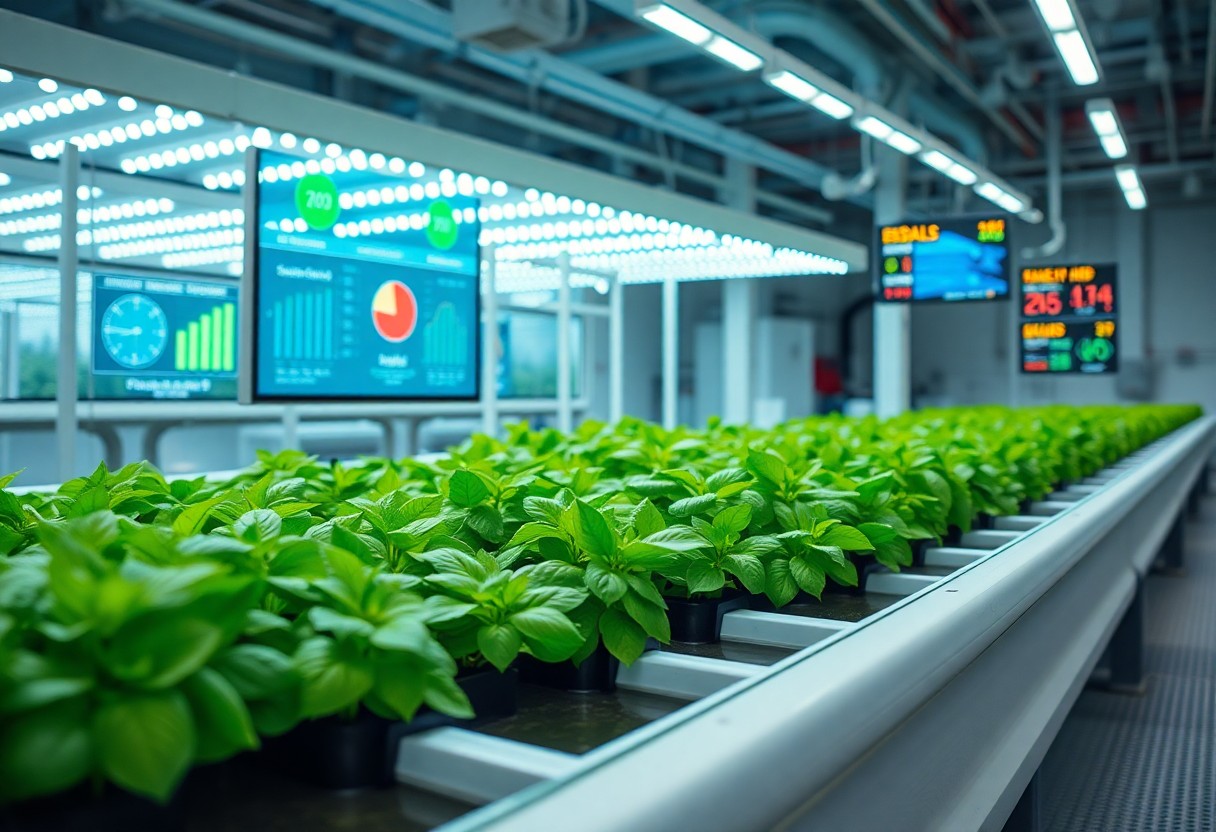
The Business of Year-Round DWC: Cost-Benefit Analysis
Initial Investment Versus Long-Term Gains
Establishing a Deep Water Culture (DWC) system for year-round growing involves a significant upfront investment in materials and technology. Initial costs typically include purchasing nutrient tanks, pumps, aeration equipment, and growing trays. For instance, a hydroponic setup may range from $1,000 to $3,000 for a small-scale operation, and varies significantly based on scale and sophistication. Furthermore, growers should account for ongoing operational expenses such as electricity, water, nutrient solutions, and maintenance. These expenditures may seem daunting, especially for beginners. However, the potential for year-round harvesting can yield strong returns on investment over time. Long-term gains are derived from the continuous production of high-value crops, which can significantly outpace the returns from traditional agriculture with seasonal limitations. Depending on the crops selected, year-round DWC systems can deliver up to five harvests in a year. For example, if a grower invests in lettuce production, they could see profits of approximately $10 per square foot annually, whereas seasonal growers may only earn a fraction of this amount. Sustainable practices and increased production efficiency can lead to net profits that validate the initial financial commitment.Financial Strategies for Crop Rotation and Diversification
Effective financial strategies are vital for mitigating risk and maximizing profitability in a year-round DWC system. Crop rotation enables growers to optimize their resources and prevent resource depletion. By rotating different crops, they not only rejuvenate their nutrient solutions but can also respond flexibly to market demand and price fluctuations. Incorporating a diverse array of high-value vegetables or herbs, such as basil or kale, appeals to a broader customer base, resulting in an enhanced profit margin due to less market saturation. Incorporating financial diversification strategies into crop planning can significantly increase total revenue. For example, introducing companion planting or seasonal crop themes allows for enhanced sales opportunities such as themed boxes or subscription services. Growers who implement rotating crops can adapt to market trends, potentially increasing profits by diversifying their offerings throughout the year. Targeting niche markets, such as organic or locally-sourced produce, can also capture higher profit margins. Diversification not only provides financial security but also builds resilience against market volatility. Growers can implement seasonal promotions or collaborative sales with local eateries to enhance revenue streams. For instance, a grower who produces both microgreens and tomatoes can appeal to restaurants seeking unique, fresh produce year-round. This strategy solidifies long-term viability and sustainable operations while enabling growers to weather seasons of reduced demand for specific crops.Community Insights: Learning from Experienced DWC Growers
Best Practices from the Field
Heeding advice from seasoned DWC growers can offer invaluable insights into optimizing systems for year-round growth. Successful growers often emphasize the significance of consistent pH and nutrient management. Experienced cultivators, like Sarah from Oregon, swear by regular monitoring, advocating for adjustments to the nutrient mix based on plant growth stages. She found that maintaining a slightly higher temperature around 70°F (21°C) during the vegetative stage can stimulate faster root development and improve overall plant health. Implementing specialized hydroponic nutrient solutions tailored to their specific crops has been another widely adopted best practice, allowing growers to maximize yields and improve flavor profiles.
Another common strategy involves utilizing beneficial bacteria and enzymes to boost plant health and nutrient absorption, as demonstrated by Tom’s success in California. By regularly incorporating microbial products, he was able to significantly reduce the incidence of root rot and other diseases, ultimately leading to healthier plants and higher production rates. Alongside this, growers recommend varying light spectrums to optimize growth phases, ensuring plants receive ample blue light during vegetative growth and red light during flowering.
Common Pitfalls and How to Avoid Them
A prevalent issue facing new DWC growers includes poor water management practices, leading to nutrient imbalances that stunt plant growth. Many beginners underestimate the importance of maintaining proper water levels and aeration. This often results in oxygen deprivation, directly affecting plant vitality. To combat this, growers like Emily from New York suggest implementing robust aeration systems and routinely checking water levels to ensure a stable environment. Accidental over-fertilization is another frequent mistake; monitoring nutrient concentrations via regular tests aids in preventing this common issue.
Lighting also poses challenges; underestimating the needs of plants can lead to subpar growth. Growers frequently find that inadequate light exposure results in elongated stems and diminished yields. Adjusting the distance and duration of grow lights, depending on plant stages, can markedly change outcomes. Additionally, pest management is often overlooked, with many beginners assuming that a closed environment is pest-proof. Using integrated pest management techniques that include regular plant inspections can help mitigate these risks effectively.
To sidestep these pitfalls, consulting resources like online forums or joining local DWC communities becomes invaluable. Engaging with seasoned cultivators through social media groups allows growers to share real-time experiences and solutions, facilitating a collaborative learning environment. Knowing the environmental needs specific to each crop type and continuously adapting systems based on real-world feedback from fellow growers can arm beginners with the knowledge they require to avoid these common mistakes.
To wrap up
Presently, seasonal adjustments in Deep Water Culture (DWC) systems offer growers the opportunity to tailor their hydroponic environments for year-round cultivation. They emphasize the importance of understanding local climate conditions and making necessary alterations to temperature, light, and nutrient delivery. By doing so, he, she, or they can enhance plant growth and yield, regardless of external weather conditions. Implementing controlled environments enables motivated farmers and enthusiasts alike to cultivate a diverse array of crops even during off-seasons, allowing for continuous production cycles that align with market demands.
Moreover, embracing seasonal adjustments not only aids in maximizing crop output but also contributes to resource efficiency and sustainability. By adjusting water and nutrient management strategies based on seasonal patterns, they can minimize waste and decrease operational costs. Ultimately, adopting these practices in DWC systems fosters a more resilient agricultural approach, equipping growers with the tools they need to thrive in the ever-evolving landscape of modern farming. With diligence and adaptability, they can continue to thrive, cultivating fresh produce throughout the year.
FAQ
Q: What are seasonal adjustments in a DWC (Deep Water Culture) system?
A: Seasonal adjustments in a DWC system refer to the modifications made to the growing environment and practices to optimize plant growth throughout various times of the year. These adjustments may include changes in light cycles, nutrient formulations, and temperature management to cater to the differing requirements of plants during different seasons.
Q: Why is it important to consider seasonal changes in a DWC system?
A: Considering seasonal changes is important because plants have different growth and nutrient absorption rates depending on the season. In winter, for example, days are shorter and temperatures are cooler, necessitating alterations in light exposure and heating to maintain optimal growing conditions. Adapting the growing parameters can lead to healthier plants and improved yields year-round.
Q: How can temperature be managed effectively in DWC during different seasons?
A: Temperature can be managed through several methods. In colder months, using heaters or heat mats can help maintain the water temperature between 65°F to 75°F (18°C to 24°C) for optimal root health. In hotter months, water chillers can be utilized, and ensuring proper ventilation will help keep temperatures from rising too high. Monitoring temperatures regularly and making necessary adjustments is key for success.
Q: What light adjustments are recommended for year-round growing in DWC?
A: Light adjustments should align with the seasonal photoperiod. In the winter months when natural light is limited, growers can increase the duration of artificial lighting to compensate, often using LED grow lights. In summer, adjusting the light intensity or duration may be beneficial to prevent overheating and light stress on plants. Using timers will facilitate these adjustments efficiently.
Q: How should nutrient formulations be adjusted for seasonal growth differences?
A: Nutrient formulations should be altered based on the growth stage of the plants and seasonal nutrient uptake variances. In early spring or fall, when plants might be experiencing slower growth, slightly reducing nutrient concentrations can be effective. Conversely, during peak growth seasons, such as summer, plants may require higher nutrient levels. Regular testing and adjusting the nutrient solution based on plant response is recommended.
Q: What types of plants are best suited for year-round growth in a DWC system?
A: Various plants can thrive in a DWC system year-round, including leafy greens like lettuce and spinach, herbs such as basil and cilantro, as well as fruiting plants like cherry tomatoes and strawberries. Selecting varieties that are known for their fast growth and adaptability to varying conditions will enhance the success of year-round cultivation.
Q: What are some common challenges faced during seasonal adjustments in DWC and how can they be mitigated?
A: Common challenges include fluctuations in temperature affecting plant health, nutrient imbalance due to varying uptake rates, and managing light intensity. To mitigate these, using temperature control equipment, maintaining a balanced nutrient schedule with regular monitoring, and employing appropriate lighting strategies can help maintain optimal conditions. Additionally, keeping a log of plant performance across seasons can inform future adjustments.

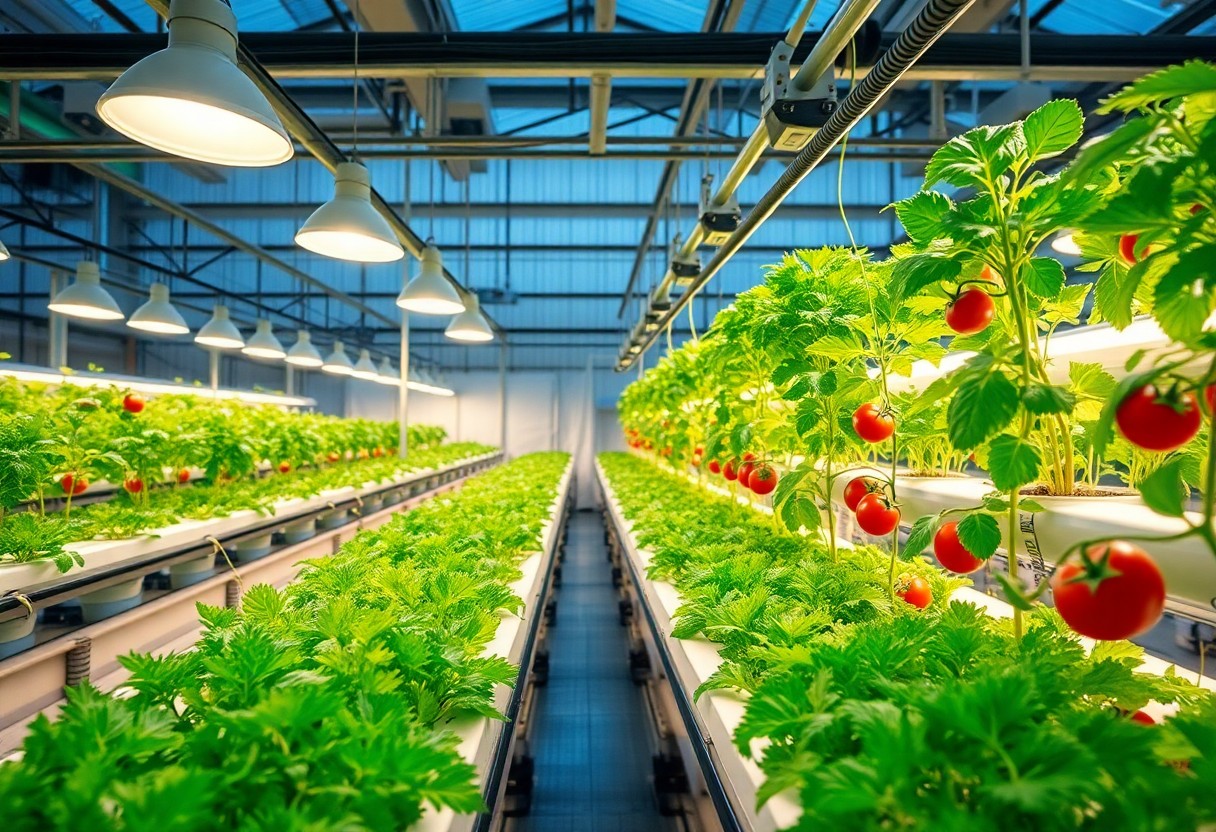

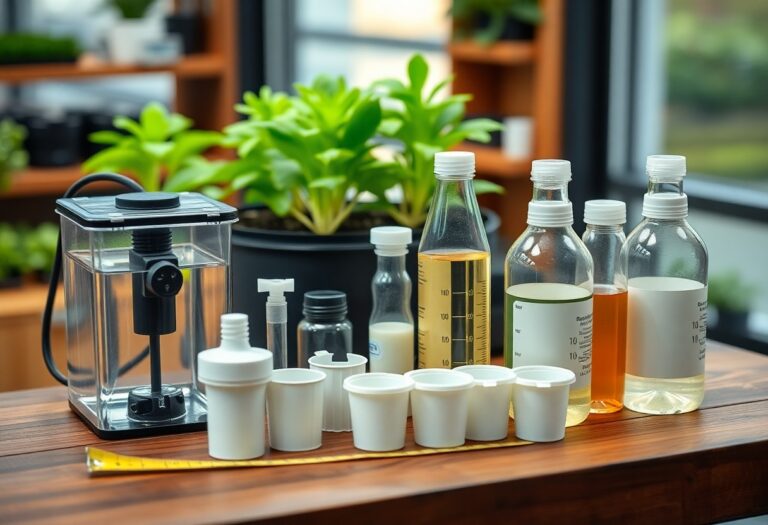
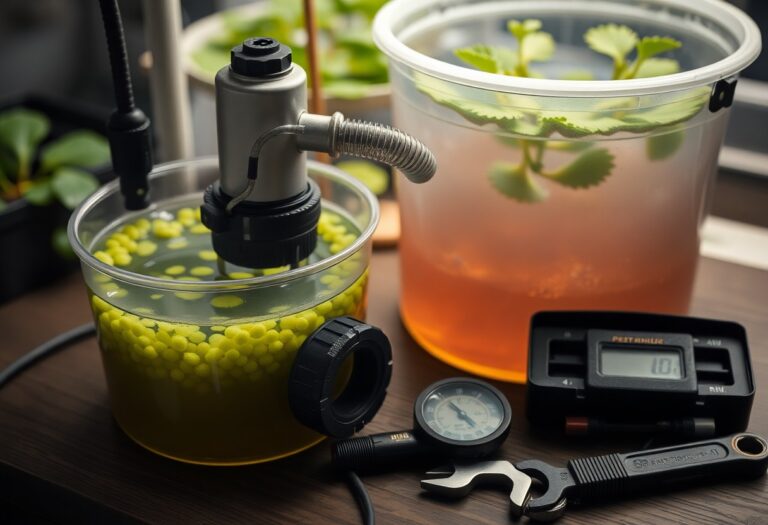

Leave a Comment